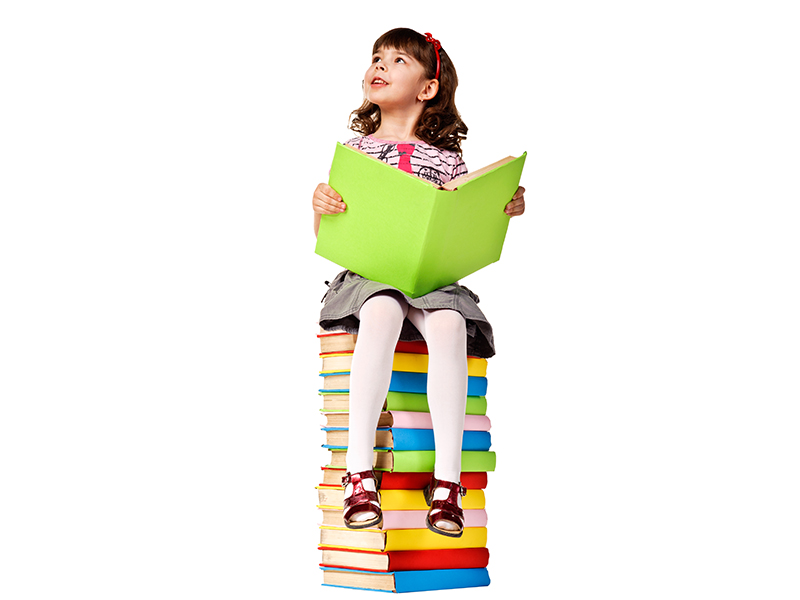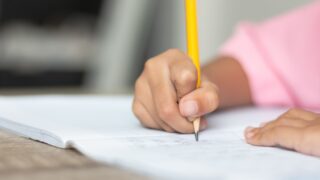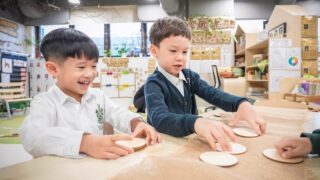Literacy specialist BEVERLY SACE runs Books and Brains Literacy Services, a reading clinic in Hong Kong that helps children in their quest to become great readers – and, in particular, tackles reading difficulties that can arise at a young age. We asked her some questions around reading milestones and how to support literacy and language development.
Beverly says that reading issues, just like health issues, are better prevented. “Psychologists and practitioners agree that Year 1 or when a child first starts primary school is the critical time for an intervention. After this, it will much more likely take longer, with more pushback from the child. This entails arming parents with knowledge, how to support typical development and what to do when things go wrong.”
It’s also a good idea, she adds, to look at children’s typical literacy and language development instead of seeking guidance from schools or education departments. Approaches to reading can vary between schools, and recent pandemic issues mean that many educators are still catching up on lost face-to-face instruction time. “This means that no matter which educational system a child is in, we can be on the lookout for possible causes of reading difficulties.”

What’s the difference between language and literacy?
While these are inevitably intertwined, language acquisition is a natural phenomenon – humans have an inbuilt universal grammar capability, as evidenced by the chatty two-year-old who learns two to five words a day! Literacy, however, is a human invention.
Literacy comprises the skills of reading and writing, and they are not natural skills that children can just pick up, contrary to popular thinking! Children do not just magically read and write. They need to be taught how to. While language and literacy skills are dissimilar in the sense of acquisition, in that the former is naturally acquired while the latter needs instruction, literacy development goes hand in hand with language development. After all, literacy is the decoding (reading) and encoding (spelling) of language in print form!
Who sets out literacy milestones? Are they universal?
The literacy milestones that children need to reach should be age-appropriate, stemming from cognitive and motor abilities. Of course, the education system has an effect on this – if schools require children to be able to read and write sentences at Year 1, then literacy learning should be started earlier, at least at Reception (K2).
The reason for this is that the English language is opaque – one sound can be represented by different spellings. Take for example what the letter “y” represents in the words yum, gym, sky and happy! These are four different sounds for the same letter. This means that children need time, two years at least, to master the basics of the English spelling system. Contrast this with a child learning Italian or Spanish who only needs one year to learn how to read and spell.
If parents feel that their child may not be reaching a milestone, what are some things they can do?
The Books and Brains Literacy Clinic offers a complimentary assessment, and I invite parents of four-year-olds to get their children’s phonics skills assessed.
Oftentimes, when parents come to me when the children are older, instead of learning how to read in a straightforward manner, we need to do work to help them unlearn ineffective ways of reading in addition to catching up. Sometimes, the child has already spent a whole year with an ineffective programme and the child still isn’t reading. Four is the age when all children should really start learning how to read independently. They need the two years in Reception and Year 1 to hone the fundamentals of reading and writing.
For any worries, it’s always best to see a literacy specialist like me. We’re able to pinpoint issues your child may be having, and what can be done to resolve them.
Similarly, if literacy milestones seem to be coming very easily to a child, what’s the best approach?
There are many children as well who have advanced phonics skills. Reading is comprised of the intertwining skills of phonemic awareness, phonics, fluency, vocabulary and comprehension. There is always an aspect of reading that we can further bolster. For example, children who may be decoding words with their phonics skills may need help reading at the sentence level, or children who are already reading fluently can be exposed to learning new vocabulary in an area they are interested in.
Are you noticing any trends in literacy rates among children across different grades?
Certainly, the pandemic had a hand in the number of children who are struggling with reading and spelling. Working parents rely on the school system and teachers are able to refer their students to learning support. However, this is not always feasible with resources and time constraints, no matter how well-supported the school is, and some children do fall through the gaps. Many parents also do not understand that reading and spelling skills are separate from language skills and find out quite late that their child has been struggling, because they seem to be doing well in school or are talkative, which makes intervention just a little bit more challenging.
What are some of the ways you can help children reach literacy milestones at different grade levels?
A school-based reading programme that works should not be dependent on parents’ home support. It’s important that parents have a conversation about reading instruction at school prior to enrolling. Ask about when your child will be reading independently, and the answer should be by the end of Reception!
At home, as a summary, start reading aloud from birth. Bring attention to the sounds of letters in words, have fun with rhyming words, funny words and words that are relevant to your child’s interests. Point out words that you see in the environment such as logos and signage. Model the habit of reading and meaningful writing such as in the writing of grocery lists, to-do lists, greeting cards and letters!
If there is one thing that really helps with independent reading that can be started at home, it is teaching children the sounds of letters, rather than letter names. Instead of saying “A, B, C”, parents can teach their children the sounds of the letters – for example, the “k” sound of the letter “c” in “cat”. As you go along your day, point out words and slide your finger under them as you say their sounds. This helps children understand that words are read from left to right with their sounds, and these sounds can be blended and make up words. This is the essence of decoding words.
It’s important that children know how to recognise and form the 44 sounds of English and their representations at the end of K2 or Reception so they can proceed to spelling work in Year 1. If you have any worry at all, get in touch for a no-obligation assessment. Some children do not need further support with literacy and language development at all and the parents come away feeling confident that their children are on track.
Suite 1204, Banyan Workspaces, Eastern Harbour Centre, 28 Hoi Chak Road, Quarry Bay.
WhatsApp 9817 5167 | bev@booksandbrains.org
booksandbrains.org
This article first appeared in the Spring 2023 issue of Expat Living magazine. Subscribe now so you never miss an issue.






